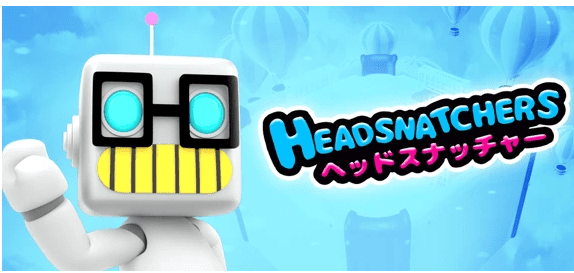

The Animation Blueprint is by far better than the animation tool of other engines.

The Animation Blueprint is a very complete tool that helped us to focus on what is really important, while allowing us to improve the game by adding cool stuff using its capabilities.
Headsnatchers game modes code#
So, when making a new level, we always contemplate the already-created code and Blueprints, and navigate into reusing them in a smart way whenever possible.ĭid you have a favorite tool from Unreal Engine 4? What was it and why? Thanks to the Blueprints tool, we were able to reuse a lot of the actors and other classes we created. With each game having its own set of rules and logic, did you have to start from scratch on each one or were you able to use some Unreal Engine 4 tricks?
Headsnatchers game modes how to#
Even during the development, if someone comes up with an interesting and fun idea on how to improve a level, we evaluate and potentially implement it. In those sessions, we received suggestions of new levels and then we work into shaping them into the form you end up playing. We have brainstorming sessions where anyone can come up with their own ideas on how to make the game funnier. We follow Chef Gusteau’s (of Pixar’s Ratatouille!) philosophy in that "anyone can cook". What was the creation process like when coming up with so many different games and arenas? Also, for creating the 100+ unique heads the way we desired (with physical animations), the PhAT was an extreme help. Well, for the levels themselves, Sequencer was of great help letting our animators produce interesting in-game intros in a comfortable way. When creating so many varied arenas and games, which Unreal Engine 4 tool was the most useful to you? Japanese game shows are the epitome of fun, and taking inspiration from them opened up a lot of possibilities to create all kinds of crazy situations. Our main goal was to create a game that would be fun for four players. Keeping with this Japanese game-show inspiration, how well do you feel this translated into video game form? Indeed, Japanese game and variety shows have been a source of great inspiration for Headsnatchers, especially in terms of the ridiculous tasks they need to perform.

That inspired us to mix Japanese culture into our games. In recent years we have been traveling to Japan and we love the country. What can you tell us about this inspiration? Were there any shows particularly inspiring to you?

Headsnatchers appears to be strongly inspired by Japanese game shows. We seek to push the limits of our talents and skills with every game we make. In spite of the inherent difficulties of being an indie dev team coming from a Latin country like Chile, we have been working hard and have a huge passion to deliver amazing experiences to our players. That’s the formula that brought us together. Tell us what brought the team together and what you hope to achieve as you develop your games. IguanaBee is a small but talented indie studio based out of Chile. The Headsnatchers Lead Programmer discusses everything from inspiration to his most effective and favorite tools within the Unreal Engine 4 suite. In the meantime, we had a chance to interview Daniel Winkler, Co-founder of Iguanabee. Released into Early Access on July 24, you can hit up Steam to take a look for yourself. An absolute riot to play with your friends and vividly brought to life with Unreal Engine 4. In Headsnatchers you certainly won’t find anything as crazy (or as gross!) as the AKBingo! ‘Blowing Cockroach’ game, but you'll find there are 25 unique arenas that allow you to do everything from using your opponent’s heads as a bowling balls to flushing their noggins down a toilet. Taking inspiration from such shows as Takeshi's Castle, MXC, and AKBingo!, Chilean indie developer Inguanabee decided to make a video game based on the quirky Japanese variety show concept. By Shawn Petraschuk We’ve all seen them, those videos of crazy Japanese game shows making their players do the wackiest of tasks.


 0 kommentar(er)
0 kommentar(er)
